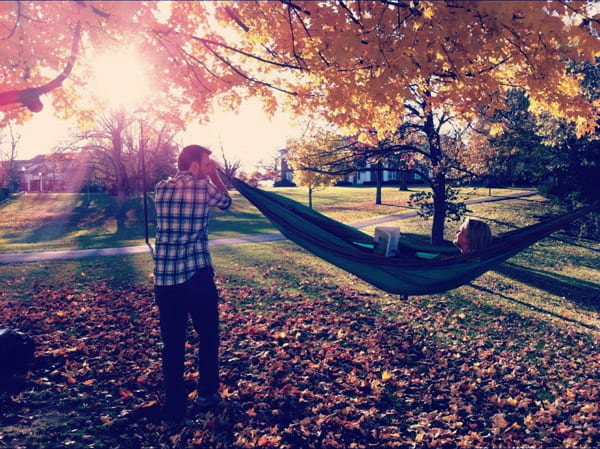By NICOLE POTTINGER – STAFF WRITER
In sunny Mérida, Mexico, students studying abroad are getting the hang of a new trend—hammocks.
Hammocks are typically large pieces of material and/or rope that are tied to either two sides of a wall or two trees. Due to their hanging nature, hammocks allow you to rock freely back and forth or to simply be carried away by the wind. While it is not uncommon to see people relaxing and napping on hammocks during the late spring and summer at Centre, the students in Mérida use them for much more practical purposes.

During the cooler months of February, the weather in Mérida becomes cooler as well. Junior Ashley Merkin tended to sleep in her bed, utilizing the covers to the fullest extent. However, when it began to get warmer, Merkin changed her sleeping arrangements.
“I slept in my hammock every night because it allowed air to flow and didn’t trap heat like the bed did,” she said. “[In Mexico] it is way too hot to sleep in a bed most of the time. So in my opinion the hammock was a life-saver.
Senior Patrick Casey absolutely loves hammocks. Casey would frequently sleep in a hammock tied across the walls of his bedroom not only during his semester in Mérida in the spring of 2014, but also when he returned to Merida for CentreTerm 2015.
“A hammock was perfect [to use] during the spring, certainly better than a bed because of the heat,” Casey said.
In terms of how to properly sleep in a hammock, Casey can offer some words of advice.
“You can lie flat if you arrange yourself diagonally in it and that is how they are most-comfortable to sleep in,” Casey said. “They take a few nights to get used to, but after that it’s no problem.”
Merkin stresses the importance of sleeping on your back. If you try to sleep on your stomach, “your body will be bending the wrong way.”
Hammocks are definitely not only used for sleeping. Merkin used hers for a variety of other activities.
“I would always take naps in my hammock or even if I was just relaxing and watching a movie,” she recalled. “I definitely preferred my hammock to my bed.”
When it comes down to it, hammocks are comfortable for health reasons as well.
“They way [hammocks] are made in Mexico really forms to your body and goes with the natural curve of your spine,” Merkin said. “It’s harder to sleep in funny ways [in hammocks] that can make your back or neck hurt because it forces you to keep your body in a natural shape. Due to this, the body is more at ease and therefore more comfortable.”
Merkin provided interesting insight into the “culture” of hammock usage among Centre students while she was abroad.
“A lot of people fell out at first,” Merkin said. “I didn’t, but some people couldn’t exactly get in or out of it gracefully and it was pretty entertaining to watch.”
However, not everyone had access to the joy of hammocks, even when temperatures reached over 100 degrees Fahrenheit.
“I am jealous I didn’t get a hammock,” junior Caty Herd said. “I really wish I did.”
For Herd, however, the reason as to why she wishes she would have bought a hammock goes beyond having a comfortable place to take a nap. She believes that having a hammock would have added to her study abroad trip as a whole.
“Hammocks are kind of like an indicator of social class and ethnicity in Mérida because all the Mayans still sleep in hammocks and the richer mestizo people don’t,” Herd said. “The Mayans are like the maids and nannies of all the upper-class mestizos. They still speak their own Mayan language in addition to Spanish and they still sleep in hammocks.”
Hammocks are undoubtedly a cozy and unique place to nap, whether you’re studying in Mexico or at Centre. The next time you are thinking about hanging a hammock, remember not only the best way to sleep in one but also the culture behind such a lovely invention.
